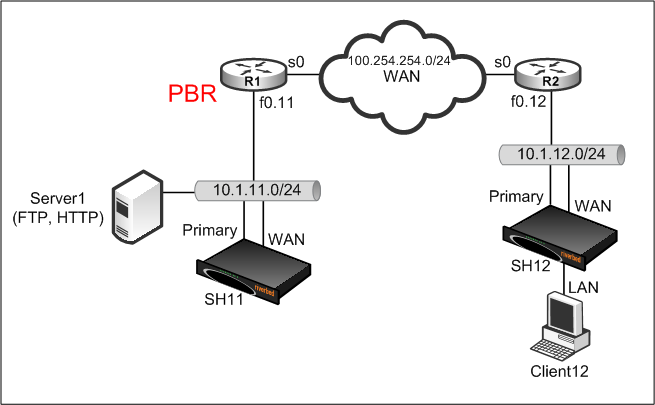Riverbed 830-01 - RCPE Certified Professional WAN Optimization
Which of the following interfaces should be used for datastore synchronization? (Select 2)
Adaptive data streamlining provides you:
In the Interceptor appliance version 3.0 and later the command to enable cluster failover is:
What is the command to clear all statistics on a Steelhead appliance?
How do you clear the peer affinity information from an Interceptor?
On the Interceptor appliance, the Networking > Steelheads page displays which of the following?
Which of the following authentication methods are supported by the Steelhead appliance?
What action is taken by the Interceptor if a connection does not match a configured load balance rule and the default pool is empty?
A server-side logical in-path deployment is shown in the exhibit. Additionally, SH12 is configured with a fixed-target rule pointing to SH11. The client behind SH12 will not be able to establish a connection to SERVER1 as a logical loop will occur when the number of optimized connections in SH11 has reached the maximum system limit.

What is the best way to resolve this issue?
When enabling MS-SQL Layer 7 optimizations, what are the best practices to use? (Select 2)



